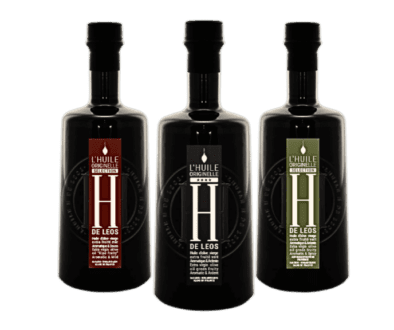Everything you need to know about oleic acidity
Olive oil is a very popular vegetable oil in many countries around the world, especially in Europe and North Africa. It is produced from olives, fruit of the olive tree, and is used in many culinary recipes. It is also known for its nutritional properties and health benefits.. Oleic acidity is an indicator of the quality of olive oil. This element is measured in percentage and indicates the amount of free fatty acids present in the oil. The more acidic the oil, the lower the quality. In this article, we are going to take a closer look at the importance of oleic acidity in the quality of olive oil and the different factors that can influence this element. We will also see the regions recognized for the quality of their olive oils.
Olive oil is a vegetable oil obtained from olives, fruit of the olive tree. Its quality is determined in particular by its oleic acidity., which measures the amount of free fatty acids present in the oil. The more acidic the oil, the lower the quality. A higher quality olive oil will generally have an oleic acidity lower than 0,8%, while lower quality olive oils will have higher oleic acidity than 2%.
Factors influencing the oleic acidity of olive oil
Several factors can influence the oleic acidity of olive oil :
- The type of olive used : olives that have been harvested before they are fully ripe generally have higher oleic acidity than ripe olives.
- The method of producing olive oil : cold extraction can reduce oleic acidity, while hot extraction can increase it.
- Oil storage conditions : olive oil stored in inappropriate conditions (for example, in the presence of excessive light or heat) can also increase its oleic acidity.
Importance of oleic acidity in the quality of olive oil
Olive oil with low oleic acidity is considered to be of higher quality, because it has a sweeter and more pleasant taste. Olive oils with high oleic acidity can taste bitter or sour, which can diminish the appreciation. Therefore, oleic acidity is an important consideration when purchasing olive oil.
Regions recognized for the quality of their olive oils
The AOC Aix-en-Provence and the AOC Les Baux-de-Provence are two regions of Provence recognized for the quality of their olive oils. According to the rules of the AOC, olive oils produced in these regions must have an oleic acidity level lower than 0,8%. This standard is considered a guarantee of quality for consumers..
In conclusion, oleic acidity is an important indicator of olive oil quality. A higher quality olive oil will generally have an oleic acidity lower than 0,8%. Several factors can influence the oleic acidity of olive oil, like the type of olive used, production method and storage conditions. Oleic acidity is an element to consider when buying olive oil, because an olive oil with a high oleic acidity can taste bitter or sour, which can diminish the appreciation. The AOC Aix-en-Provence and Les Baux-de-Provence regions are renowned for the quality of their olive oils, which must have an oleic acidity level lower than 0,8%. By choosing an olive oil produced in these regions, you are guaranteed to buy top quality olive oil.






Huile d'olive : an oil rich in unsaturated fatty acids | ProvencalBox
19 December 2022 @ 10h06
[…] rich in unsaturated fatty acids, especially in monounsaturated fatty acids such as oleic acid. These fatty acids are believed to be beneficial for heart health and may help […]
Les avantages du régime méditerranéen et de l'huile d'olive pour votre santé | ProvencalBox
17 January 2023 @ 17h02
[…] olive oil is an important source of unsaturated fatty acids, including oleic acid, which can help lower bad cholesterol (LDL) and maintain good cholesterol […]